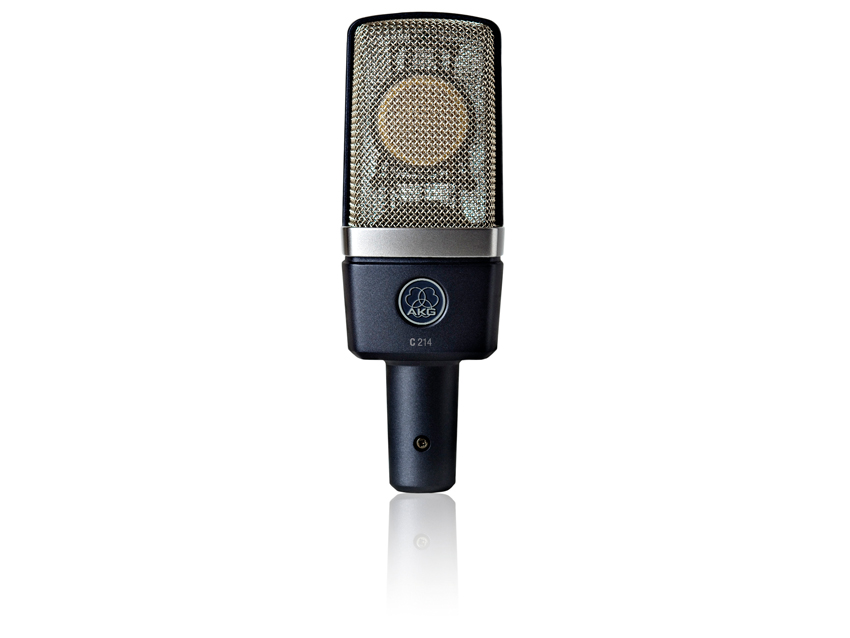MusicRadar Verdict
The C214 is a solid performer for anyone who wants to record a variety of instruments in the studio.
Pros
- +
Easy to use. Maximum SPL capability with minimum noise. Matte greyish blue finish.
Cons
- -
Not so great for electric bass.
MusicRadar's got your back
Designed, engineered and built in Vienna, Austria, AKG microphones have had an enviable reputation for technical excellence ever since the company was established more than 60 years ago.
These days, AKG is starting to pay more attention to what its customers want in other areas - so the designs are looking sexier, lots of accessories are supplied with the microphones, and the technical features are continually being improved.
The new C214 large diaphragm, side-fire condenser microphone is very reasonably priced when compared to its competitors. It has just one pickup pattern - cardioid - but it comes complete with a spider suspension mount and a foam windscreen all neatly packaged in a metal carrying case - ideal for taking out on the road. And you don't have to pay out extra for these items, most of which you are going to want.
In detail
Technically, the C214 uses a 1-inch edge-terminated large diaphragm capsule that delivers a highly detailed, up-front sound - and it can handle an incredible 143dB dynamic range - accurately capturing transient details. It also features an integrated capsule suspension that reduces mechanical noise and resonance, further improving sonic accuracy.
The all-metal die-cast body provides a high degree of RF-immunity and has a shock- and scratch-resistant matte greyish-blue finish with a rugged double mesh grille to protect the capsule. The C214 has incredibly low self-noise, at just 13dB(A), along with very high headroom, and will work with phantom power sources ranging from 12 to 52V.
Switching in the microphone's 160Hz bass roll-off filter helps to remove unwanted low-frequency rumble (due to floor vibrations, handling noise or whatever) without unduly affecting the sound of most recorded voices or instruments. Using this filter also minimises the proximity effect that you get when close-miking sources from less than six inches.
Also, by switching in the pre-attenuation pad, you can increase the microphone's headroom by 20dB when you are recording very loud sound sources such as drum kits, guitar amps or trumpets, thus preventing the microphone's output from overloading the input of the mic preamplifier.
Want all the hottest music and gear news, reviews, deals, features and more, direct to your inbox? Sign up here.
In use
The C214 works well with vocals and speech, piano and organ and acoustic/electric guitars, but not quite as well with electric bass. It's recommended for recording strings, such as double bass, violin or cello, and it also performs well on drums - particularly for overheads.
The frequency response curve is flat from 60Hz up to 1kHz, giving it a very accurate and solid bottom end. It dips between 1kHz and 2.5kHz, down by a couple of dB at 2kHz, helping to prevent electric guitars from sounding too shrill, for instance, before rising again.
This 'wiggle' in the response is mirrored by a lift between 2.5 to 5kHz, up by a couple of dB at about 3.5kHz before falling back, which helps to make sure that instruments don't sound too 'dull'. Then, there is a steady rise in the response between 5.5kHz and 13kHz, giving a strong 'presence' lift to vocal and instrumental recordings.
Summary
In action, the C214 sounds extremely similar to the C414, but we prefer the C214 for electric guitar - it has a slightly 'punchier' sound. So, if you're on a budget, but prepared to spend a reasonable amount on a general-purpose studio microphone, the C214 is an excellent choice.
